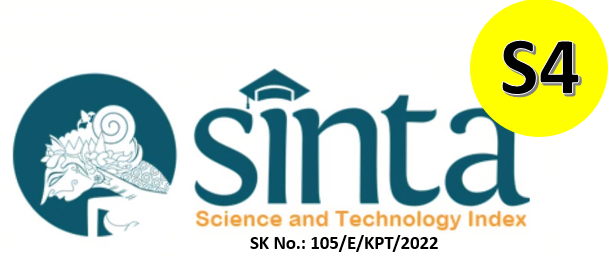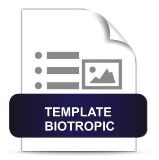Kajian Pemanfaatan Tanaman Tradisional Indonesia untuk Perawatan Kulit atau Rambut
DOI:
https://doi.org/10.29080/biotropic.v8i1.1986Keywords:
Ethnobotanical studies, traditional plants, skin care, hair careAbstract
Ethnobotany is a scientific approach used to explore the potential of plant species traditionally utilized by communities. This study aims to analyze the utilization of plant types and parts, as well as their phytochemical contents, for skin and hair care among the Indonesian population. The data from this research enriches the understanding of the rich ethnobotanical knowledge and practices related to skin and hair care among the Indonesian populace. The methodology employed involves a combination of survey methods and comprehensive literature analysis. Survey data was collected from 62 respondents from 22 different geographic regions in Indonesia. The survey results revealed the usage of 15 plant species from 13 families by the Indonesian community for skin or hair health maintenance. Based on literature review, it was found that most of these plants contain compounds such as flavonoids, alkaloids, saponins, and tannins. According to the literature study, these compounds have been proven to provide significant benefits in skin or hair care.
Downloads
References
Abdullah, B. J., & Nasreen, R. 2012. Cosmeceuticals: A revolution in cosmetic market. International Journal of Pharmacy and Technology. 4(1): 3925–3942.
Adianti, M., Sjioen, E.M., Arifa Mustika, A., Hamsidi, R., Puruhito, E.F., Sumardiko, D.S., Imandiri, A. & Maya Septriana, N., 2023. Pengaruh pemberian masker seledri (Apium graveolens L.) terhadap pengurangan jumlah lesi jerawat. Lansau: Jurnal Ilmu Kefarmasian (LJIK). 1(1): 59-68.
Ali, A., Akhtar, N., & Chowdhary, F. 2014. Enhancement of human skin facial revitalization by moringa leaf extract cream. Postepy Dermatologii I Alergologii. 31(2): 71–76.
Arlene, A. 2013. Ekstraksi kemiri dengan metode soxhlet dan karakterisasi minyak kemiri. Jurnal Teknik Kimia USU. 2(2): 6–10.
Asnia, M., Ambarwati, N. S. S., & Siregar, J. S. 2019. Pemanfaatan rimpang kunyit (Curcuma domestica val.) sebagai perawatan kecantikan kulit. Prosiding Seminar Nasional Multi Disiplin Ilmu, 697–703.
Aswin, R. K., Tridiganita, I. S., Arif, N. M. A., Gavrila, A. P., Dina, D. A., & Gabrielle, A. V. P. 2022. Abrus precatorius: A comprehensive insight into the phytochemical, pharmacological, therapeutic activities and safety. Journal of Drug Delivery and Therapeutics. 12(1): 151–157.
Benediktus, B. 2017. Mutu fisik sediaan shampo cair ekstrak daun Mangkokan (Nothopanax scutellarium Merr). [Doctoral dissertation]. Akademi Farmasi Putera Indonesia.
Berawi, K. N., Wahyudo, R., & Pratama, A. A. 2019. Potensi terapi Moringa oleifera (Kelor) pada penyakit degeneratif. Jurnal Kedokteran Universitas Lampung. 3(1): 210-214.
Chime, A. O., Raymond, O. A., Moses, E. O., & Matthew, C. O. 2017. Morphological evaluation of tomato (Solanum lycopersicum Linn.) cultivars. Makara Journal of Science. 21(2): 97-106.
Dani, B. Y. D., Wahidah, B. F., & Syaifudin, A. 2019. Etnobotani tanaman kelor (Moringa oleifera Lam.) di desa Kedungbulus Gembong Pati. Al-Hayat: Journal of Biology and Applied Biology. 2(2): 44–52.
Dewi, M. L. 2022. Pengolahan Aloe vera (lidah buaya) sebagai minuman sehat. Abdi Wiralodra: Jurnal Pengabdian Kepada Masyarakat. 4(1): 35-45.
Dhanti, K. R. 2018. Skrining antikanker menggunakan metode BST (Brine Shrimp Lethality Test) pada ekstrak metanol daun saga (Abrus precatorius L.) dengan partisi etanol. Riset Informasi Kesehatan. 7(1): 61–67.
Dwinanda, A., Afriani, N., & Hardisman, H. 2019. Pengaruh jus seledri (Apium graveolens L.) terhadap gambaran mikroskopis hepar tikus (Rattus norvegicus) yang diinduksi diet hiperkolesterol. Jurnal Kesehatan Andalas. 8(1): 68-75.
Elfahmi, Woerdenbag, H. J., & Kayser, O. 2014. Jamu: Indonesian traditional herbal medicine towards rational phytopharmacological use. Journal of Herbal Medicine. 4(2): 51–73.
Fatmawati, I. 2014. Efektivitas buah lerak (Sapindus rarak de candole) sebagai bahan pembersih logam perak, perunggu, dan besi. Borobudur. 8(2): 24–31.
Gediya, S. K., Mistry, R. B., Patel, U. K., Blessy, M., & Jain, H. N. 2011. Herbal plants: Used as a cosmetics. Journal of Natural Products and Resources. 1(1): 24–32.
Goleniowski, M. E., Bongiovanni, G. A., Palacio, L., Nuñez, C. O., & Cantero, J. J. 2006. Medicinal plants from the “Sierra de Comechingones”, Argentina. Journal of Ethnopharmacology. 107(3): 324–341.
Harsha, V. H., Hebbar, S. S., Hedge, G. R., & Shripathi, V. 2002. Ethnomedical knowledge of plants used by Kunabi Tribe of Karnataka in India. Fitoterapia. 73(4): 281–287.
Hawa, L. C., Farhanrika, N. L., & Ahmad, A. M. 2022. Utilization of lerak juice (Sapindus rarak DC) as natural surfactant in the liquid washing soap production. Jurnal Teknik Pertanian Lampung. 11(1): 24–34.
Langingi, R., Momuat, L. I., & Kumaunang, M. G. 2012. Pembuatan sabun mandi padat dari VCO yang mengandung karotenoid wortel. Jurnal MIPA. 1(1): 20.
Listiani, L., & Abrori, F. M. 2019. Ethnobotanical study on Tidung Tribe in using plants for medicine, spice, and ceremony. IPTEK The Journal for Technology and Science. 29(1): 18.
Ma, Y., Che, H., Gao, S., Lin, Y., & Li, S. 2022. Diverse novel viruses coinfecting the tropical ornamental plant Polyscias balfouriana in China. Viruses. 14(6): 1120.
Maong, R., Rorong, J. A., & Fatimah, F. 2015. Aktivitas ekstrak buah tomat (Lycopersicum esculentum Mill) sebagai penstabil oksigen singlet dalam reaksi fotooksidasi asam linoleat. Jurnal MIPA. 4(2): 60.
Masriana, S., Halang, B., & Mahrudin. 2023. Inventory of the Citrus in Barimbun Village, Tabalog District. Journal Of Biology Education Research (JBER). 4(2): 82-88.
Maulana, I. T., Deviani, T., & Nurulfikri, A. 2021. Analysis of the quality parameter and the fatty acid content from the four of Indonesian consumed nuts. Jurnal Penelitian Pascapanen Pertanian. 18(3): 147.
Medeiros, M. C., Pinto, A. S., Santos, D. R. D., Martel, G., Lopes, S. D. F., & Mourão, J. D. S. 2022. Folk taxonomy and scientific nomenclature: Working together for conservation of fishery resources in Brazil. Journal for Nature Conservation. 68(2022): 126214.
Ningsih, A. M. M., & Ambarwati, N. S. S. 2021. Pemanfaatan lidah buaya (Aloe vera) sebagai bahan baku perawatan kecantikan kulit. Jurnal Tata Rias. 11(1): 91–100.
Nirmalan, T. E. 2017. Cosmetic perspectives of ethno-botany in northern part of Sri Lanka. Journal of Cosmetology & Trichology. 3(3): 126.
Novita, M., Satriana, S., & Hasmarita, E. 2015. Kandungan likopen dan karotenoid buah Tomat (Lycopersicum pyriforme) pada berbagai tingkat kematangan: Pengaruh pelapisan dengan kitosan dan penyimpanan. Jurnal Teknologi dan Industri Pertanian Indonesia. 7(1): 35–39.
Nurita, E., Thaib, C. M., Adiansyah, A., & Hutasoit, I. 2018. Penggunaan jeruk nipis (Citrus aurantifolia) dan lidah buaya (Aloe vera L.) sebagai sediaan hair tonic. Jurnal Farmanesia. 5(1): 28–33.
Oktoba, Z. 2018. Studi etnofarmasi tanaman obat untuk perawatan dan penumbuh rambut pada beberapa daerah di Indonesia. Jurnal Jamu Indonesia. 3(3): 81–88.
Parrey, M. S., & Ahmad, I. 2016. Pharmacological values of Eclipta alba Linn (Asteraceae): A systematic review. World Journal of Pharmaceutical Sciences. 5(12): 504–512.
Pranowo, D., Herman, M., & Syafaruddin, S. 2016. Potensi pengembangan kemiri sunan (Reutealis trisperma (Blanco) Airy Shaw) di lahan terdegradasi. Perspektif: Review Penelitian Tanaman Industri. 14(2): 87-101.
Pratama, Y., & Kustiawan, P. M. 2023. Antioxidant activity of ethanolic extract Tetragonula testaceitarsis propolis combined with of Lepisanthes amoena leaves. Jurnal Mandala Pharmacon Indonesia. 9(1): 55–61.
Putri, R. K., Hastuti, U. S., & Rohman, F. 2014. Antibacterial effect of Lerak (Sapindus rarak dc) ethanol extract in various concentration against Propionibacterium acnes. Sains & Matematika. 6(2): 61-66.
Qian, H., Wang, L., Li, Y., Wang, B., Li, C., Fang, L., & Tang, L. 2022. The traditional uses, phytochemistry and pharmacology of Abrus precatorius L.: A comprehensive review. Journal of Ethnopharmacology. 296(2022): 115463.
Rifkia, V., Jufri, M. & Mun’im, A. 2017. Hair growth promoting activity of Nothopanax scutellarium Merr. Leaves. Journal of young pharmacists: JYP. 9(3): 436–440.
Roy, S., Acharya, R., & Pandya, P. 2016. Effect of shodhana (purification/processing) on powder microscopical and analytical parameters of gunja (Abrus precatorius linn.) seeds. International Journal of Pharmacy and Pharmaceutical Sciences. 8(11): 81-85.
Safithri, M., Yasni, S., Bintang, M., & Ranti, A. S. 2012. Toxicity study of antidiabetics functional drink of Piper crocatum and Cinnamomum burmannii. HAYATI Journal of Biosciences. 19(1): 31–36.
Sagajoka, E., Nona, R. V., Antonia, Y. N., & Gobhe, D. 2021. Peningkatan ekonomi masyarakat desa Borani melalui inovasi pengolahan keripik batang pisang (BAPIS). Prima Abdika : Jurnal Pengabdian Masyarakat. 1(4): 136–143.
Santo, T., Pereira, R. & Leitão, J. 2017. The pea (Pisum sativum L.) rogue paramutation is accompanied by alterations in the methylation pattern of specific genomic sequences. Epigenomes. 1(1): 6.
Sari, A. T., Annisa, N., & Rusli, R. 2019. Potensi kombinasi ekstrak daun kokang dan kersen sebagai tabir surya secara in vitro. Proceeding of Mulawarman Pharmaceuticals Conferences. 10: 58–63.
Silalahi, M. 2020. Pemanfaatan daun kelor (Moringa oleifera Lam) sebagai bahan obat tradisional dan bahan pangan. Majalah Sainstekes. 7(2): 107-116.
Sofyani, W. O. W. 2019. Sistem klasifikasi kelor dalam etnobotani masyarakat Wolio. JSW (Jurnal Sosiologi Walisongo). 3(1): 49–64.
Suhaimi, N. S. M., Share-Yuan, G., Noni, A., Rofina, Y. O., Kok-Gan, C., & Kwai, L. T. 2017. Diversity of microbiota associated with symptomatic and non-symtomatic bacterial wilt-diseased banana plants determined using 16S rRNA metagenome sequencing. World Journal of Microbiology and Biotechnology. 33(168): 1-10.
Syahara, S., & Vera, Y. 2020. Penyuluhan pemanfaatan buah tomat sebagai produk kosmetik antioksidan alami di desa Manunggang Julu. Jurnal Education and Development. 8(1): 21–22.
Syamsuhidayat, S. S., & Hutapea, J. R. 1991. Inventaris tanaman obat Indonesia. (1st ed.). Departemen Kesehatan RI.
Timalsina, D. & Hari, P. D. 2021. Eclipta prostrata (L.) L. (Asteraceae): Ethnomedicinal uses, chemical constituents, and biological activities. Biomolecules. 11(11): 1-18.
Tirtosudarmo, R. 2022. Managing multicultural society in Indonesia. ISLAM NUSANTARA: Journal for the Study of Islamic History and Culture. 3(2): 21–38.
Veriana, T., Kasrina, K., & Ansyori, I. (2014). Studi etnobotani tumbuhan obat tradisional oleh suku Jawa dan Lembak Kelingi di kecamatan Sindang Kelingi kabupaten Rejang Lebong dan implementasinya pada pembelajaran biologi SMA. [Skripsi]. Universitas Bengkulu.
Von Rintelen, K., Arida, E., & Häuser, C. 2017. A review of biodiversity-related issues and challenges in megadiverse Indonesia and other Southeast Asian countries. Research Ideas and Outcomes. 3(2017): e20860.
Walujo, E. B. 2008. Research ethnobotany in Indonesia and the future perspectives. Biodiversitas Journal of Biological Diversity. 9(1): 59-63.
Wijayanti, F., Sari, M., Suprayitno, R., & Aminin, D. 2020. The gel soap with raw materials of Lerak fruit (Sapindus rarak DC). Stannum: Jurnal Sains dan Terapan Kimia. 2(1): 1-6.
Yuliana, L. 2023. Studi morfologi genus Piper dan variasinya. Biocaster: Jurnal Kajian Biologi. 3(1): 11-19.
Yulianti, A. B., & Sofian, F. F. 2017. Review artikel: Aktivitas farmakologi ekstrak Urang-Aring (Eclipta alba L.). Farmaka. 15(2): 178–185.
Zhu, X., Yun-yun, Q., Zhun-jun, Y., Min, L., Ting, W., Lu-yao, Z., Shi-qi, F., Jun-ning, Z., & Li, L. 2023. Sources, morphology, phytochemistry, pharmacology of Curcumae longae, Curcumae radix, and Curcumae rhizoma: a review of the literature. Frontiers in Pharmacology. 14: 1-22.
Downloads
Published
How to Cite
Issue
Section
License
Copyright (c) 2024 Muhammad Hafid Dinata, Cinta Alivia Atha, Erinda Putri Dewiyanti, Woro Anindito Sri Tunjung, Khairul Anam, Fajar Sofyantoro

This work is licensed under a Creative Commons Attribution-NonCommercial-ShareAlike 4.0 International License.













